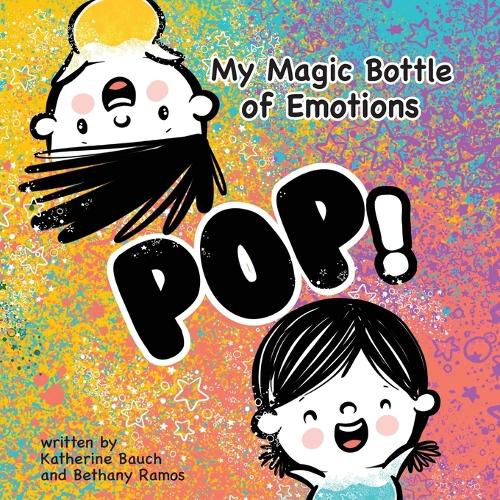Readings Newsletter
Become a Readings Member to make your shopping experience even easier.
Sign in or sign up for free!
You’re not far away from qualifying for FREE standard shipping within Australia
You’ve qualified for FREE standard shipping within Australia
The cart is loading…






This title is printed to order. This book may have been self-published. If so, we cannot guarantee the quality of the content. In the main most books will have gone through the editing process however some may not. We therefore suggest that you be aware of this before ordering this book. If in doubt check either the author or publisher’s details as we are unable to accept any returns unless they are faulty. Please contact us if you have any questions.
Kids feel things so deeply that, a lot of times, it catches parents off-guard. But there’s a way to give kids back their power by helping them find their voice. My Magic Bottle of Emotions explores twelve everyday emotions in a way that’s meaningful for young children, using colorful language and illustrations.When you’re feeling shy, you’re PINK: pink prickles, throat tickles, bashful, quiet, invisible. When you’re feeling disappointed, you’re BLUE: blue, a lost shoe, let down, confused, frustrated. By the end of this imaginative book, a child will associate emotions with familiar colors, have a better understanding of how emotions appear, and, most importantly, feel safe to let their colorful emotions POP! out of their magic bottle so they don’t get trapped inside.
Whether a child is typically developing or has special needs, emotions can be difficult to identify and correctly label.This can be especially true for kids that fall on the autism spectrum. Our goal was to create a book that fosters emotional intelligence in children of all abilities. Many kids on the spectrum have varying degrees of sensory processing disorder (SPD). That’s why we used as many sensory words as possible used to describe each emotion in this book. Yellow swing, for example, is a great description for happy because children with SPD often find the act of swinging calming and grounding.The Center on the Social and Emotional Foundations for Early Learning (CSEFEL) recommends using picture books to help children identify emotions and teach them how to deal with their feelings. For children and adults, emotional intelligence (EQ) has been determined to be a greater contributor to success than even IQ.
$9.00 standard shipping within Australia
FREE standard shipping within Australia for orders over $100.00
Express & International shipping calculated at checkout
This title is printed to order. This book may have been self-published. If so, we cannot guarantee the quality of the content. In the main most books will have gone through the editing process however some may not. We therefore suggest that you be aware of this before ordering this book. If in doubt check either the author or publisher’s details as we are unable to accept any returns unless they are faulty. Please contact us if you have any questions.
Kids feel things so deeply that, a lot of times, it catches parents off-guard. But there’s a way to give kids back their power by helping them find their voice. My Magic Bottle of Emotions explores twelve everyday emotions in a way that’s meaningful for young children, using colorful language and illustrations.When you’re feeling shy, you’re PINK: pink prickles, throat tickles, bashful, quiet, invisible. When you’re feeling disappointed, you’re BLUE: blue, a lost shoe, let down, confused, frustrated. By the end of this imaginative book, a child will associate emotions with familiar colors, have a better understanding of how emotions appear, and, most importantly, feel safe to let their colorful emotions POP! out of their magic bottle so they don’t get trapped inside.
Whether a child is typically developing or has special needs, emotions can be difficult to identify and correctly label.This can be especially true for kids that fall on the autism spectrum. Our goal was to create a book that fosters emotional intelligence in children of all abilities. Many kids on the spectrum have varying degrees of sensory processing disorder (SPD). That’s why we used as many sensory words as possible used to describe each emotion in this book. Yellow swing, for example, is a great description for happy because children with SPD often find the act of swinging calming and grounding.The Center on the Social and Emotional Foundations for Early Learning (CSEFEL) recommends using picture books to help children identify emotions and teach them how to deal with their feelings. For children and adults, emotional intelligence (EQ) has been determined to be a greater contributor to success than even IQ.